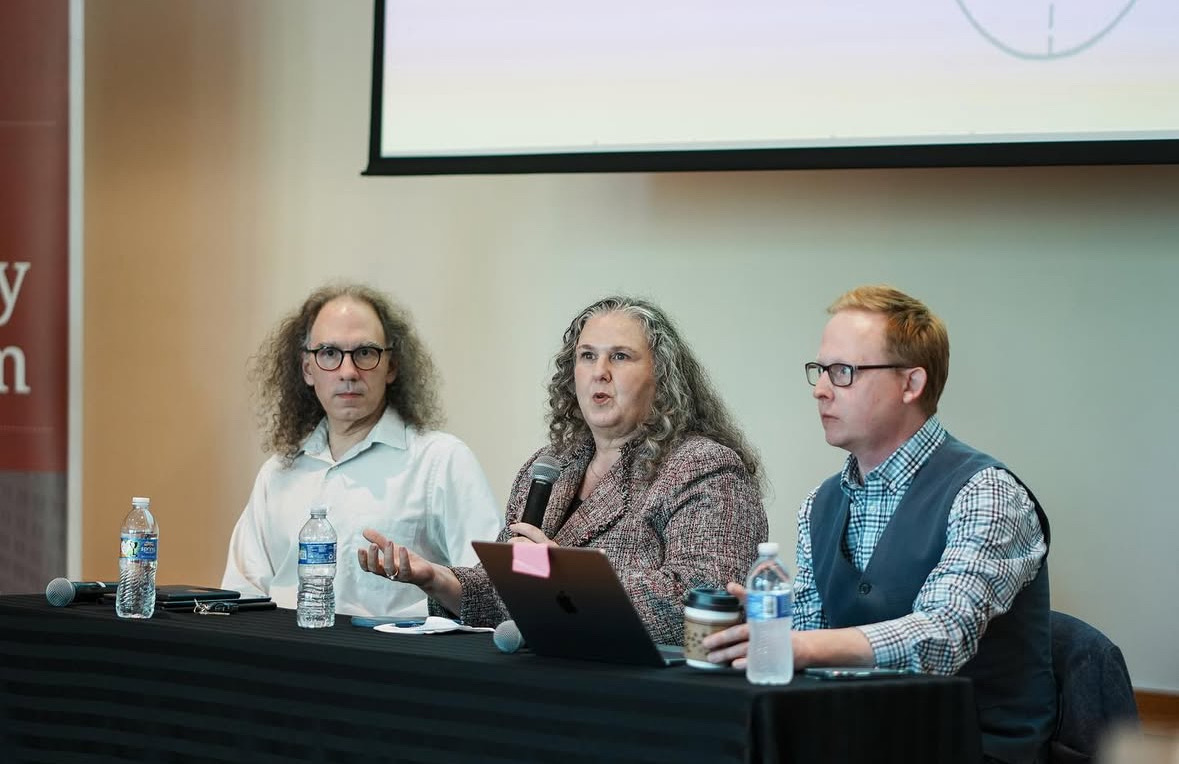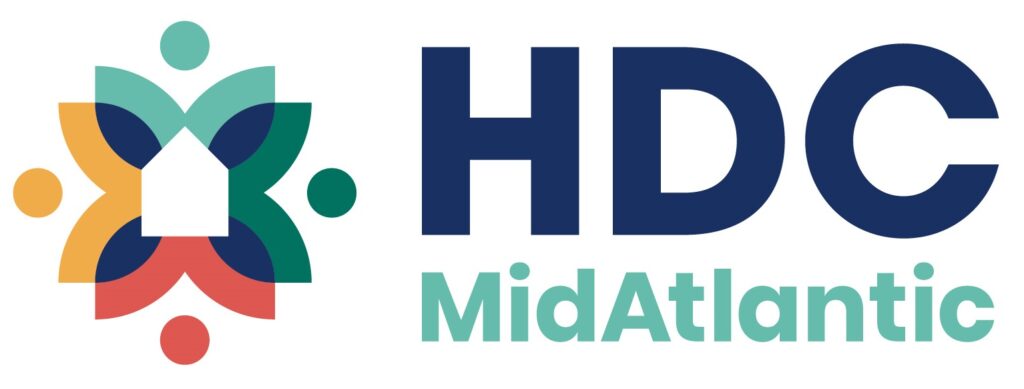“In this digital era where news can spread quickly, misinformation can spread even faster, and artificial intelligence moves at lightning speed, it can feel like keeping up and knowing the right thing to do can be time consuming.” Said Lea Zikmund, Hourglass’s Executive Director, opening the May Hourglass First Friday Forum on media literacy and education.
Three Lancaster County educators joined Zikmund in the conversation. Panelists included Charlie Reisinger, Penn Manor CIO and adjunct professor at Millersville University; Stacey Irwin, professor of Media Arts Production at Millersville University; Robert Spicer, associate professor of Communications at Millersville University and a freelance journalist. View PowerPoint slides here.
Reisinger reflected briefly on the complexity of media over the years, comparing 1985 to 2025. In 1985, the general public’s source of information was taken from a small pool of curated sources of media like the newspaper, telephone and television. Since then, with the advancement of technology, a plethora of news and media outlets are readily accessible through phones, tablets, and other devices.
It remains a challenge for kids to decipher accurate news from misinformation. Looking at diagram outlining age level application to media, Reisinger noted a necessity for kids to develop critical thinking skills as they grow up. Engaging in diverse perspectives not only strengthens a child’s cyber and data literacy, but “builds complexity” and improves their digital citizenship.
Moving away from a “fast-paced mentality” can also shift an individual’s mode of thinking. When consuming media, Reisinger encourages students to practice lateral reading, “interrogating a source” to evaluate its credibility. Reviewing additional sources also helps to determine the reliability and validity of media or content.
In tandem with Reisinger’s intentional practice, Irwin presented her findings on media usage among her college students. In “Survey of Media (COMM 200)”, Irwin guides students to “access, analyze, evaluate, create and act” when taking in multiple media forms.
Early on, students are encouraged to audit their media intake in the span of a week. Guidelines include tracking time spent on a device, location, number of devices used, media consumed, and time spent with others or alone.
Reflecting upon the overall experience, one student commented that “our whole world is full of media, it’s almost impossible to avoid.”
Other trends included frequent media consumption on multiple devices. Common forms of media recorded by students include streaming services, social media, creative services, or gaming outlets. Drawing from her class’s observations, Irwin noted that while students consumed the most media in the morning and evening, many were doing so alone with multiple devices.
Students also recorded social media as their primary source of information for news.
With a plethora of news sources at our fingertips, it can be challenging to decipher reputable sources. Spicer pondered the public’s mistrust of journalists and media and why they are often “vilified”.
To start, Spicer outlined the difference between “the media” and “medium.” Often, “the media” is referred to incorrectly as a singular entity, when, in fact, it is plural. “Media are multitude,” and can cover organizations, institutions, technologies, cooperations, or content types.
“The way the medium delivers the message affects the way you interpret it,” Spicer notes. Take the creation of a TikTok and YouTube video. Both social media platforms deliver content in different ways and are created with different purposes.
The media is not without fault. Biases between “the left” or working class, and “the right”, the elite, take on multiple forms. Either side can be present through targeted ads, news, or other pieces of content. While “the left” may be swayed through a “corporate ownership” bias, favoring the interest of a corporation or media outlet, “the right” may lean towards a “liberal bias” and believe that “all reporters are liberals.” This furthers the distrust of the media and journalists on the right.
With this context, what is a journalist’s job amidst the scrutiny of the media? Often, journalists are critiqued for having a partisan bubble or being profit motivated. Yet, Spicer notes, that journalism should consist of “reporting facts that correspond to reality” and helping “the public make sense of those facts”.
In interpreting media, it’s important to have a foundation of “media grammar literacy” and context literacy. Meaning, revisiting print media, still photographic, tv or film, and radio and audio and taking into consideration how different variables can contribute to an “altered perception” of their message. To improve overall medium literacy, a helpful practice can be to actively engage and critique content and media that is consumed regularly.
(Editors note: This is One United Lancaster’s last coverage of the Hourglass First Friday Forums. For more information on Hourglass’s mission and vision, click here. To watch previous First Friday forums or to sign up for future events, click here. )






